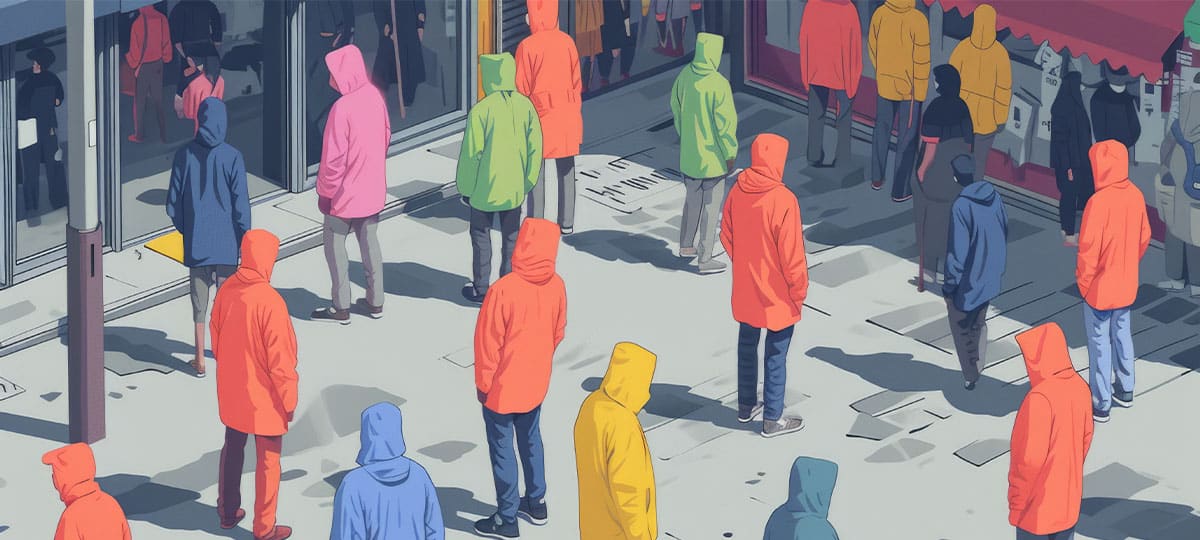First things first:
- Secondary characters mirror the main character or challenge them.
- Extras create atmosphere and credibility.
- Every character needs a goal, attitude and a function for the scene.
- Well formed supporting characters act instead of just “standing around”.
- Less is more – rather a few, clear supporting characters than many pale ones.
When you tell a story, it doesn’t live through the main character alone – you build an entire universe. In this space, supporting characters and extras contribute decisively to the atmosphere, social fabric and depth of your world. Anyone who thinks “They’re just standing around – can they go?” underestimates their potential.
Secondary characters are not extras. They reflect the inner life of the main character, bring conflicts into play and open up new thematic levels. Even extras have their job: they convey realism, mood and context – sometimes only through a small gesture or a look. If these figures remain empty, the scene looks hollow. But with presence, posture or targeted interaction, small but powerful accents are created that remain in the memory.
Supporting character vs. extra – small roles, big effect
How do you distinguish between supporting characters and extras? Secondary characters appear over several scenes. They
Both types of roles need presence: an attitude, a look, a subtle relationship to the main character or the setting. Even a silent extra can create depth when they reflect the mood or comments on it unconsciously. If you notice while writing: “This character is useless”, then ask yourself: What would be different without them? If nothing is missing – cross them out. If something is missing – expand it carefully.
What makes good supporting characters
A strong supporting character needs friction, perspective and function. It should:
- mirror or challenge the main character,
- have their own perception and view,
- Influence mood, pace or action.
The ensemble of characters is the engine of the story – not just the main character. Each person contributes to the dynamic, even in small performances. Only a coherent ensemble brings a story to life. Use targeted questions:
- What does this character want in this scene?
- What do they see – and what do they overlook?
- What would be missing if they weren’t there at all?
If you can’t find clear answers, the character lacks a purpose – or needs a makeover.
Actively shaping secondary characters – attitude, relationship, function
Secondary characters live from attitude and relationship. Give them their own view of the main character – they don’t have to harmonize, but their perspective should reveal something new. Use gestures, facial expressions, minimal action to show attitude – someone who constantly looks at the clock interprets the scene differently than someone who listens quietly.
If you have too many characters, group similar roles together. Every recurring character needs a clear function. Anyone who stands in the background without meaning attracts negative attention.
As Autorenwelt writes , “secondary characters are the secret stars of a novel” – they only make a world believable because they ground the main characters and reflect their decisions. Secondary characters can deepen themes, bring in humor or tragedy and carry unspoken subtext. They contradict, observe or comment – sometimes only through a movement. This creates scenes that work without being overloaded.
Practical exercises
- Exercise 1: Change of perspective
Take a scene from your manuscript and write it from the point of view of a minor character. In this way, you will discover new facets, how they experience the events, how they mirror or contrast the main character through their perception. - Exercise 2: Enliven the scene
Choose a scene with a focus on your main characters (such as dialogue). Add a new person in the background who has a function – observer, disturber, silent force. Develop how atmosphere and subtext change. - Exercise 3: Figure test
Read a scene and think: Would it still work if this supporting character wasn’t there? If so, cross them out; if not, think about how you can strengthen their role.
Conclusion
Secondary characters are the backbone of your narrative world. They lend depth, credibility and dynamism – and show what happens between the lines. When each character has a goal, an attitude and a function, the result is a text that breathes. Because even if you only appear for a short time, you can make an impression.
With our checklist, we help you to develop secondary characters in a targeted manner and to check whether they really enrich your story: Checklist: Secondary characters with effect
Sources:
- Bookerfly Authors’ Camp, Workshop with Jennifer B. Wind, 07.05.25
- Schreib-Tipp: Nebenfiguren-No-Go: Wie gerade vom Autor auf die Bühne gerufen
- Stoffentwicklung und Dramaturgie: Was Sie über Ihre Figuren wissen müssen
- Nebenfiguren, die heimlichen Stars Ihres Romans Teil I | Autorenwelt
Do you like our magazine? Then sign up for our GRIN newsletter now!










